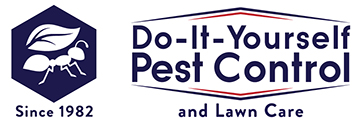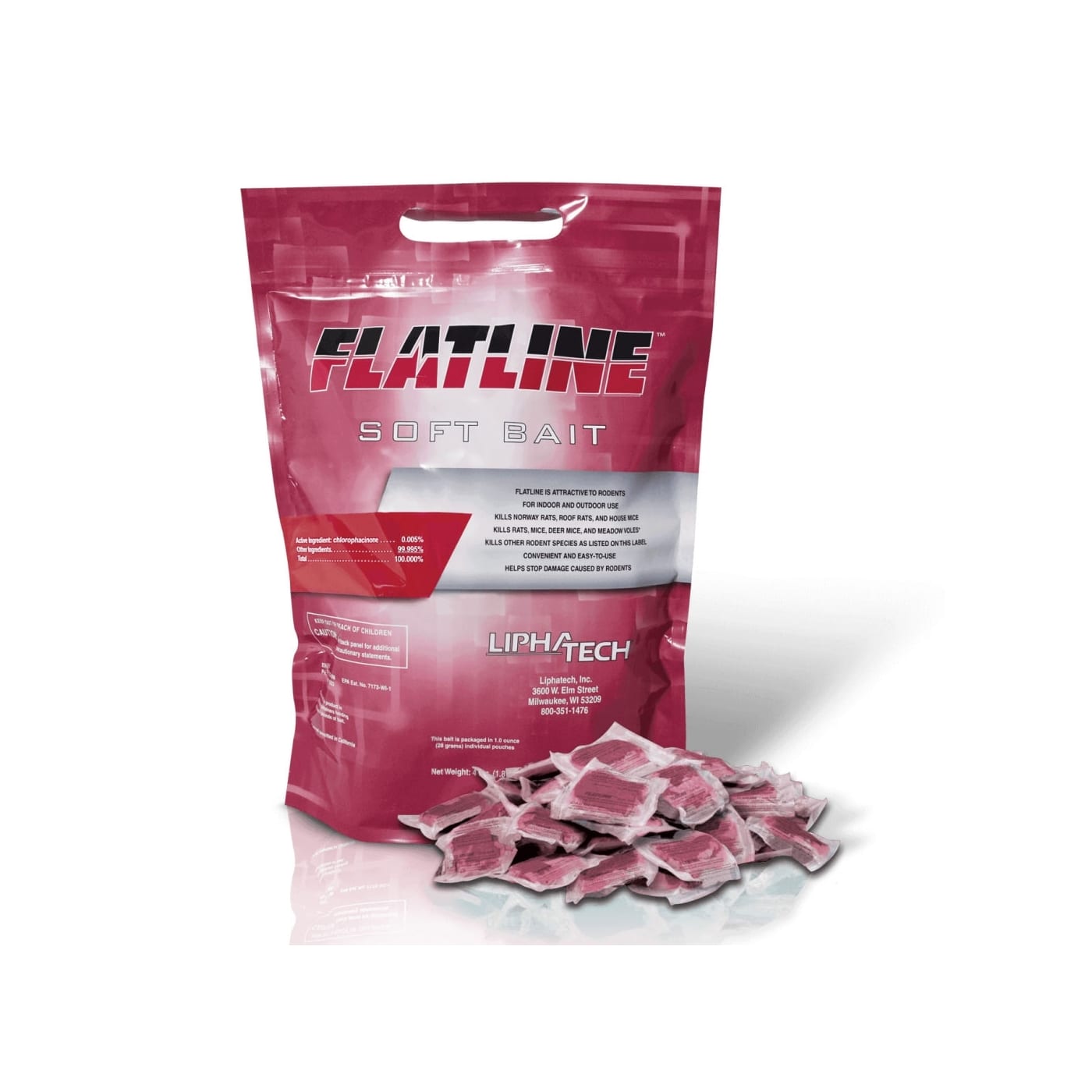
Flatline Soft Bait
Starting at $34.30
BUNDLE & SAVE 5%!

Product Information
Flatline Soft Bait
Besides Roof rats, Norway rats, and House mice, Flatline Soft Bait is also labeled to control white-footed mice, cotton mice, meadow voles, white-throated woodrats, Polynesian rats, and other rodents listed on the label.
One of the top features of Flatline Soft Bait is its effectiveness even in extreme temperatures, and it is made without nuts that results in lesser debris.
Top Features
- High bait acceptance, the formula is palatable to mice and rats. It is made without seeds or nuts to reduce debris and service time.
- A bittering agent added to discourage animals, pets, and children from eating them
- Maintains its integrity and freshness in hot environments
- Available in 4 lb bags with 28 grams (0.98 oz) pouches
- Pouches can be quickly secured with bait rods or feeding devices, such as SoftSecure Technology (SST)
- Sales Sheet
Packaging:
- 4Ib bag
- 16Ib bag
- Case: 8 x 4 Ib bags
- Flatline Soft Bait 4lb and 3 Protecta Evo Ambush Stations Kit
First, Select Treatment Areas
After a rodent inspection, place Flatline Soft Bait in areas of rodent activity. These common areas include in corners and hiding areas, along walls, between walls and floors, and besides burrows. Signs include rodent droppings, gnawed wood, and urine stains. Use a flashlight to make inspection easier.
Understanding which type of rodent you have is helpful to improve rodent bait placements. are usually found in burrows outside but maybe in lower levels of a building. Their bodies are more robust than those of roof rats. Roof Rats are climbers and are often seen on top of fences, trees, and in attics or upper levels of a building. Mice can be found in all levels of a building. Mice tend to eat smaller amounts of food with more frequency.
Place rodent bait close to walls or their established runway paths. Do not place bait around the fence or perimeter beyond 100 feet from a building. This product is not labeled for baiting in burrows.
Possible Competing Food Sources: Keep lids on garbage cans and remove exposed pet food for the best results when baiting. These other sources of food would compete with the rodent bait.
We highly recommend tamper-resistant bait stations. We carry them in both rat and mouse size; when in doubt of which size to choose from, choose the larger rat size since both rats and mice can fit into the station.
Directions
Remove the pouches. Each pouch contains 1.0 oz. (28 g). and place them in bait station that secures the bait. Each pouch contains 1.0 oz. (28 g).
- Mice and Meadow Voles: Place 1 pouch along rodent activity, spaced about 8–12 feet apart. In areas of high mouse activity, use 2 pouches every 8–12 feet. Keep checking the bait and replenish as needed with a constant supply of fresh bait for 15 days or until mice activity has ceased.
- Rats: Place 3-16 pouches, at 15-30 feet apart. Replenish as needed for 10 days or until rat activity has ceased.
- Follow Up: If the bait is contaminated or spoiled, replace it with fresh bait. Use weather-proof gloves and dispose of visible dead animals and leftover bait.
- Discourage reinfestation: Limit food and water sources as well as harborage areas.
- Continuous infestation: Keep permanent tamper-resistant bait stations in place of rodent activity and replenish Flatline Soft Bait as needed.
| Packaging | 4lb Bag, 16lb Pail, Case (8x4lb bags) |
|---|---|
| Product Label | Flatline Soft Bait Label |
| SDS | Flatline Soft Bait SDS |
| More PDF's | N/A |
| Target Pest | Norway Rats, Roof Rats, House Mice, Deer Mice and Meadow Voles, White-footed Mice, Cotton Mice, Cotton Rats, Golden mouse, Polynesian rat, Meadow vole* , White-throated woodrat, Southern plains woodrat and Mexican woodrat and other rodents listed on the label. |
| Active Ingredient (s) | Chlorophacinone....0.005%; Vitamin K1 is the antidote. |
| For Use : |
|
| Yield | N/A |
| Mixture|Application | N/A |
| Shipping Restrictions | ND |








